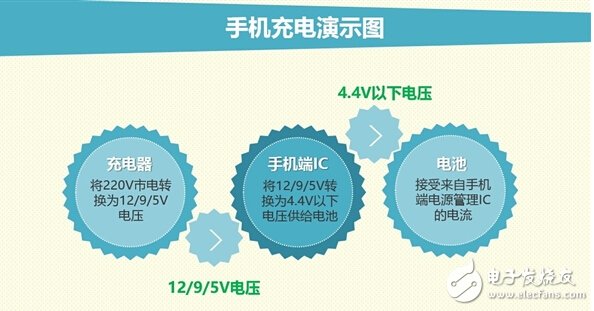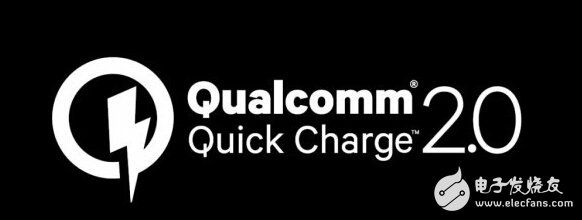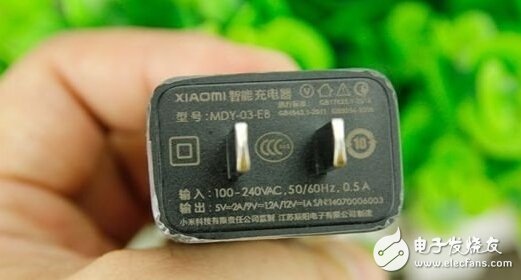When there is no breakthrough in mobile phone battery technology, fast charging is very important for mobile phones. Mobile phones that do not support fast charging are embarrassed to call themselves flagship. So, what is the difference between fast charging technology on the market? What are the characteristics of fast charging technology from various manufacturers?
In the second half of 2015, models are basically equipped with fast charging technology. In general, I think charging power over 10W (that is, 5V 2A) can be called fast charging.
Let's briefly introduce the evolution of mobile phone charging:
![[Dry goods] the most comprehensive fast charge technology in history](http://i.bosscdn.com/blog/19/90/80/2-1603161419264S.jpg)
At first, the mobile phone battery is not big. At this time, the default 5V 0.5A of the USB interface can meet the needs of charging; but when the smart machine appears, the power consumption rises due to the great demand for performance, 0.5A can not meet the need. ; An enhanced USB charging identification standard was defined: BC 1.2. It extends the charging current up to 5V 1.5A.
However, by the end of 2013, there were more than 3,000 mAh of smartphones. At this time, even 5V 1.5A could not meet the demand, so it expanded to 5V 2A again.
Common sense 1:
The phone's charging current is controlled by the phone, not the charger. That is to say, the mobile phone is the dam, the charger is only the reservoir, the mobile phone will intelligently detect the load capacity of the charger, the charger power is good, the mobile phone will allow the charger to load higher current; the charger design output current is too small, Then the phone will also limit the current that charges itself.
This is the reason why we want to buy a high-power charger, for example, a mobile phone supports up to 5V 1.5A input. If you buy a 5V 1A charger, it will cause the phone to charge only 5V 1A, not only the charging speed. Slow, and because the charger has been working at full load, the heat is severe; on the contrary, if you buy a 5V2A charging head, the phone will control only input 1.5A current, the charger load is low, and there is sufficient margin.
Yes, I actually said that Apple, iPhone 6 / Plus respectively supports up to 5V 1.5A / 2A charging, but the standard Apple charger is only 5V 1A. For the iPhone6 ​​with more than 1800 mAh battery, it doesn't matter, but for the iPhone6 ​​Plus with a battery close to 3000 mAh, it's almost a matter of life!

In actual tests, the iPhone 6 Plus uses the iPad charger's peak charging current to 5V 1.9A. The only reason is that it saves money. After all, Cook is a big money person. It is a ridiculous behavior to wash any ground on the brain.
At present, the iPhone 6S/6S Plus should continue this style. You can buy it on Fulian.com and then buy an iPad charging head.
Ok, let's continue to talk about history. In fact, 5V 2A is Qualcomm's so-called Quick Charge 1.0 technology. Of course, in order to prevent the charger from being fully loaded, the average mobile phone is limited to 5V 1.8A. Android mobile phone 5V 2A charging technology has no restrictions and no identification protocol, everyone can use.
But Apple is an exception. The disgusting Apple not only has the LighTIng data cable certified, but the charger is also certified. Apple devices detect non-original chargers that limit the current to 5V/1A or even 0.5A.
Therefore, Apple brought a very bad head, deliberately manufacturing hardware certification and software restrictions for its own interests, resulting in everyone's equipment can not be universal; brain residual fruit powder do not wash your fruit for safety blabla, poor quality charger no matter what, right You and the equipment are the same! 5V 2A and 1A do not make any difference, 5V 1A fake apple charging head electric dead people have less news?
So Qualcomm’s dreams are awake, can it still make money like this? As a result, various private agreements have been released, which means that if you accidentally buy more mobile phones, you have to match several different charging heads!
We all know that the key to increasing the charging speed is to increase the charging power. Power (W) = current X voltage, the charger first step down the commercial 220V to 5V output to the phone Micro USB interface, and then the internal circuit of the phone is stepped down to 4.3V to charge the battery. There are two steps in the buck.

Before the charger output voltage is 5V, we want to improve the current; but when it reaches 5V 2A, the bottleneck comes: the increase of current will inevitably cause a large number of Micro USB interfaces and data lines can not bear.
![]()

At present, the universal Micro USB interface and our USB data cable can only guarantee safe and efficient transmission under the current of 2A, and the current exceeds 2A hardware can not stand. The quality is relatively good, but it can be 3A. The problem is that the possibility of inferior data lines and USB ports must be taken into account. It is easy to increase the current, and it is easy to cause accidents on these inferior accessories.
So the witty Qualcomm proposed a high-voltage technology route -- Quick Charge 2.0: Why don't we increase the voltage of the charger to the USB interface? This is indeed a very good idea. Increasing the voltage can increase the charging power without changing the current load of the data line. The interface and the data line are not replaced, which greatly saves the cost.

Qualcomm has designed two solutions for Quick Charge 2.0 -- Class A and Class B. The Class A used in mobile phones can provide three voltages of 5V, 9V, and 12V. In fact, basically only 9V is used.
The Class B solution voltage will support four voltages of 5V, 9V, 12V, and 20V, and the power can reach 60W, but the standard B is basically prepared for the tablet and notebook.
We can simply calculate, Xiaomi 4/NOTE, input current limit 9V 1.2A, the actual power is the same as 5V 1.8A, but the current is directly 1/3 smaller, which means the data line and interface loss is greatly Reduced.

Washing machines are very common in every family. Banshen washing machines, with high quality, good design and best service. Many products have been sold to over 30 countries. After many years of developing, banshen washing machines are getting better and better.
Our well-equipped facilities and excellent quality control throughout all stages of production enable us to guarantee total customer satisfaction. Besides, we have received CE, CB, RoHS and CCC certifications.
As a result of our high quality products and outstanding customer service, we have gained a global sales network reaching America, Asia, Europe, Africa, the Middle East and other countries and regions.
If you are interested in any of our products or would like to discuss a custom order, please feel free to contact us. We are looking forward to forming successful business relationships with new clients around the world in the near future.
7.2~8.5kg Twin Tub Washing Machine
Plastic Cover Washing Machine,Home Portable Washing Machine,Semi Automatic Washing Machine,Twin Tub Washing Machine With Dryer
Ningbo Banshen Electric Appliance Co., Ltd , https://www.banshendq.com